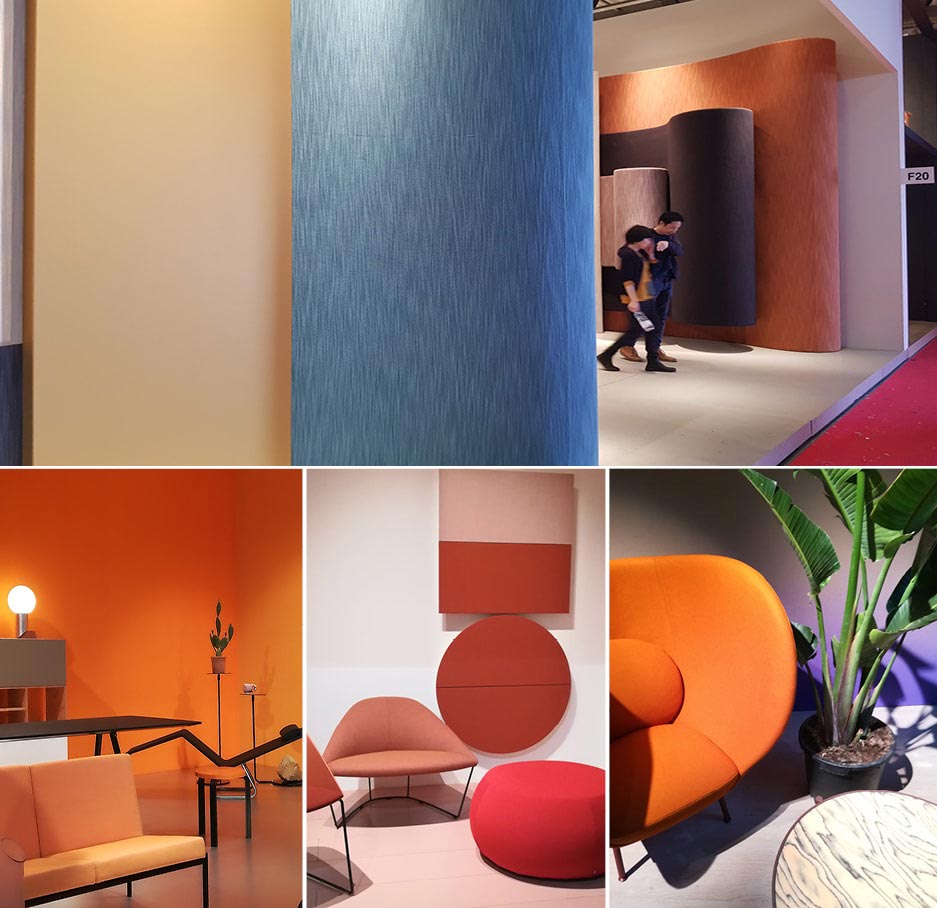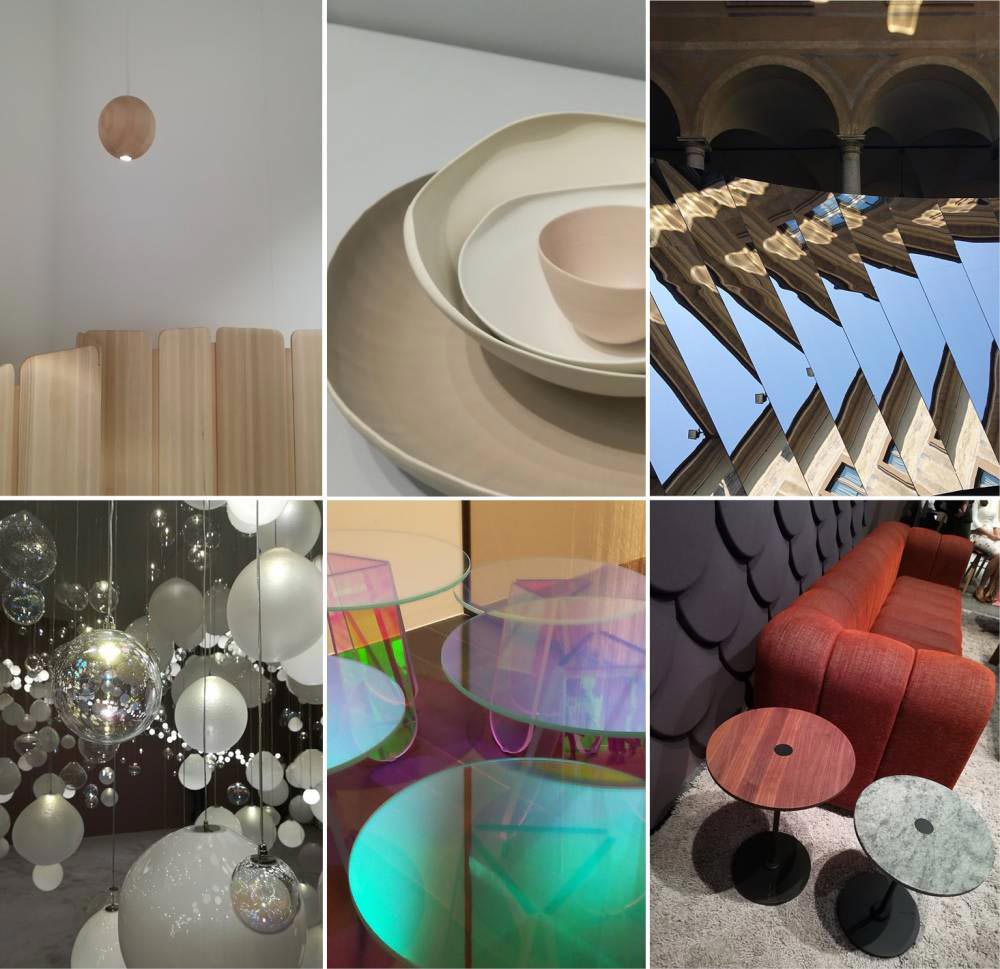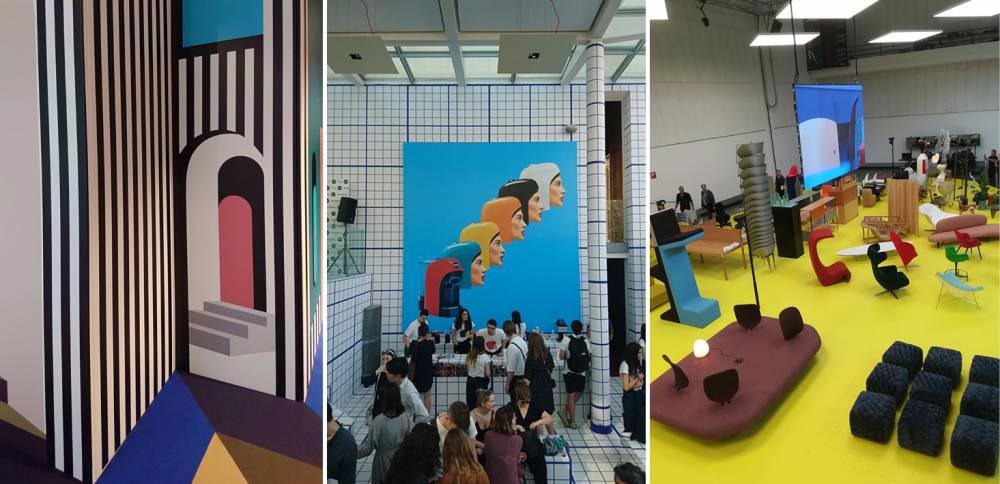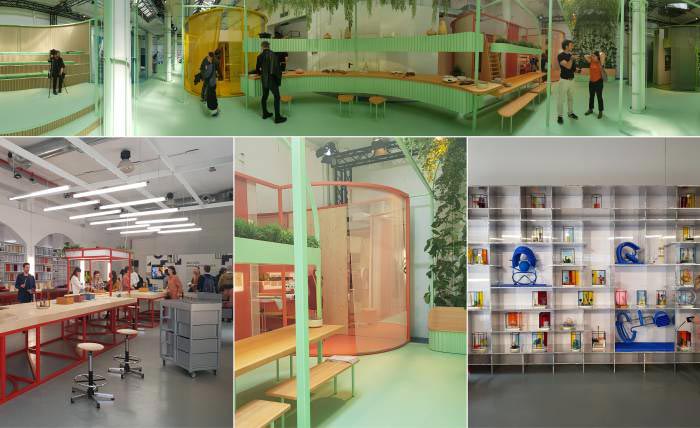Trend report from Milan Design Week
During the Milan Design Week the city in Northern Italy is in a state of emergency. Every year, the world’s largest furniture fair and countless exhibitions, installations and design events attract interior fans and design enthusiasts from around the world to Milan. The industrial designer Rainer Mutsch was there this year and summarized the latest trends of the Milan Design Week 2018 for us.

Color Mood
We experienced this year’s Milan Design week as rather colorful, especially the colors green and orange could be found all over the fair. A 70’s influence was recognizable as well. The nuances ranged from apricot over tangerine to mango. Referencing to the natural world green hues, like moss green, sage green and mint, were combined with earth tones and vibrant colors, such as purple. In contrast metallic hues were used frequently the entire product range.

Materials
Tactile qualities of fabric, tracery and upholstery were in focus as well. Sensuous experience was achieved through visible structures and weaves.
Tradtional techniques were reinterpreted by using industrial materials.
Similar to the last years marble is still omnipresent. Ceramics, tiles and mosaic are moving more into focus in furniture design. Emphasis was put on aesthetic fabrication and processing of surfaces, as well as old handcrafts and obvious artificial industrial design. The tendency of polished surfaces and diffuse color plays through different fabrication methods was perceived through the whole fair.
Thanks to new CNC manufacturing techniques big structures and sustainable installations made out of wood were spread all over Milan.
Glass in all of its variations, sizes and colors appeared frequently in installations and exhibition spaces.
Wooden inlays and unforeseen colors were brought back again in new combinations. Leading to new purposes the material was set into a new context and differed from its commonly known usage.
That opens up a new path for the material, which is still commonly used but no longer evident in its interpretations. Like wooden inlays Terrazzo is now experiencing a strong comeback.

Comebacks
It can’t be denied that the postmodernism was revived during the Milan Design Week.
Products were shown not too seriously, in a humorous and charming light. During the Salone del Mobile many reissues of design classics and limited editions were dug out from the archives of famous icons. Morphologies that were recalling Art Déco, as well as quotiations of the era between the 50s and the 70s were recognizable.
High tech textile in combination with newly interpretated wooden constructions aroused both the glamour of past as well as it depicts the technical possibilities of the present.

Decorative Objects
This year it wasn’t hard to notice a trend towards a growing accessories sector. Classical furniture companies started adding solely decorative objects to their portfolio. Many of them resulting from a hybridization of industrial and handmade elements.

Greenery
The usage of decorative, partly artifical, plantation was massive both indoors and outdoors. We were wondering what’s going to happen to the décor after Salone del Mobile closed its doors.
Natural materials like stone and clay were seen nearly all over the fair.

Hybrid spaces
Hybrid spaces dedicated to multi-functionality were in focus of this year’s fair. Innovation was orientated toward simple everyday moments at home. Precedence was accorded to values like flexible an easy customization of nomadic furniture and room constellations. Warm and welcoming well-structured environments with an eye on quality and comfort could be found all over the Milan Design Week.
The industrial designer Rainer Mutsch has a multi-disciplinary design studio based in Vienna. He loves to work intensively with new material- and manufacturing technologies and to develop products that are elegant, precise, yet simple and above all are meant to meet human needs. Rainer works with a list of international clients and cultural institutions like BMW/Mini, Coca Cola, Swarovski, Römerquelle or WKO, amongst others.
All pictures taken by Rainer Mutsch